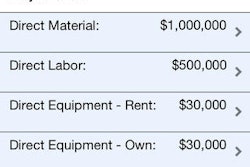In a business where pennies on the dollar comprise your net margin you darn well better be focused on costs. To make sure they are making the most of every dollar they spend most people concentrate on Return on Investment (ROI). It's the Holy Grail of the business world. How do you figure out what your ROI is? Here's the simplest way: ROI = (Total Benefits - Total Cost) x 100.
For example, let's say the cost to perform a job is 10 units, and the benefit we receive from it is 20 units. We can plug these figures into the formula above like this: ROI = (20-10) x 100. And, in this case, our ROI would be 200%. Pretty good! In fact, if business were this easy, anybody could do it. But they can't, because business isn't this easy, and because the calculation is flawed. Calculating your true ROI is as elusive as the Holy Grail.
Managers the world over want to know the ROI on the money they're spending and investing. When they sit around the table and discuss whether to spend money on something, they are really asking if it will be worth the investment. Sometimes, the answer is clear-cut and the decision, an obvious one. But not always.
Contractors excel at the cost side of the equation. Costs are easy to calculate; benefits are not. In our effort to measure ROI, we try to quantify everything. But, we simply can't. Sure, we can identify all the costs involved, and that gives us part of our equation. But, the calculation of benefits is much tougher. If, for example, I invest in safety training for my crew, I can calculate the exact cost of that training. But how do I calculate the benefits? If my team's safety practices do not improve, does that mean benefits were zero? Or perhaps the training prevented a major mishap. Of course, we can't measure a mishap that didn't happen, so again, is the benefit zero?
We are often so focused on cost that it seems to grow before our very eyes. The font gets bigger and bolder, the color brighter. And because we can't truly assign a number to benefit, we perceive it as being less. The font seems to get smaller and harder to read. Don't fall into this trap. Yes, be aware of what you're spending and investing - but, to reduce everything to an ROI calculation means you're going to miss out on some great opportunities.
As a professional speaker, I face this challenge often. The meeting planner wants to know my fee (cost); I tell them. They compare me to the next person on their list, and then choose. Often, they come back and say that they really want me, but my fee is outside their budget (cost).
I ask why they really want me, and they reply that I'm a great fit for their group, they love my energy, they like my style, and they really think I can impact the audience (benefits). The conversation continues as I point out more things I do to support the presentation or in conjunction with the presentation (additional benefits). I have now shifted their perceptions from a cost focus to a benefits focus. The font on the cost side has gotten smaller, while the font on the benefits side has grown.
Still, many firms fall back on ROI to make a decision - and then regret it. Let's continue with my scenario. Despite my best efforts, I cannot persuade them to shift focus away from cost. They pick the lower-priced speaker. He comes to their event with little energy, he doesn't fit well with the group, and he presents old, boring material. That ROI calculation that had been looking like a sure thing wasn't so sure now. They saved some money, yes, but the audience is wondering why they wasted their time attending such a bad presentation. It happens all the time, in every industry. My neighbor sells medical equipment, and it just happened to him. He was beaten on price by a firm that sells a product with proven lower quality. But the purchasing manager wasn't looking at lifetime cost of ownership - just initial cost. My neighbor has a product with a boatload of benefits, but the buyer refuses to see past cost. Bad decision! ROI has failed again.
The challenge for you is to explain the benefits of the decision you want to make. This is critical if you want to succeed in a corporate America where the temptation is to go with the low bidder. You may well know the benefits you offer - so well, in fact, that you think everyone else knows them. But they don't. If the person you are talking with can't connect the dots on what your idea or service can do for them and how it will benefit them, then you must connect the dots for them. If you are competing with another firm for a job and they can explain the benefits better, then they get the job. This is not about bragging. It's about apprising the buyer of all you bring to the table. Go ahead; tell them what you can do for them then do it and let ROI speak for itself.


















